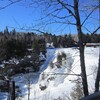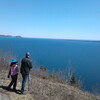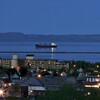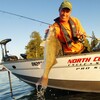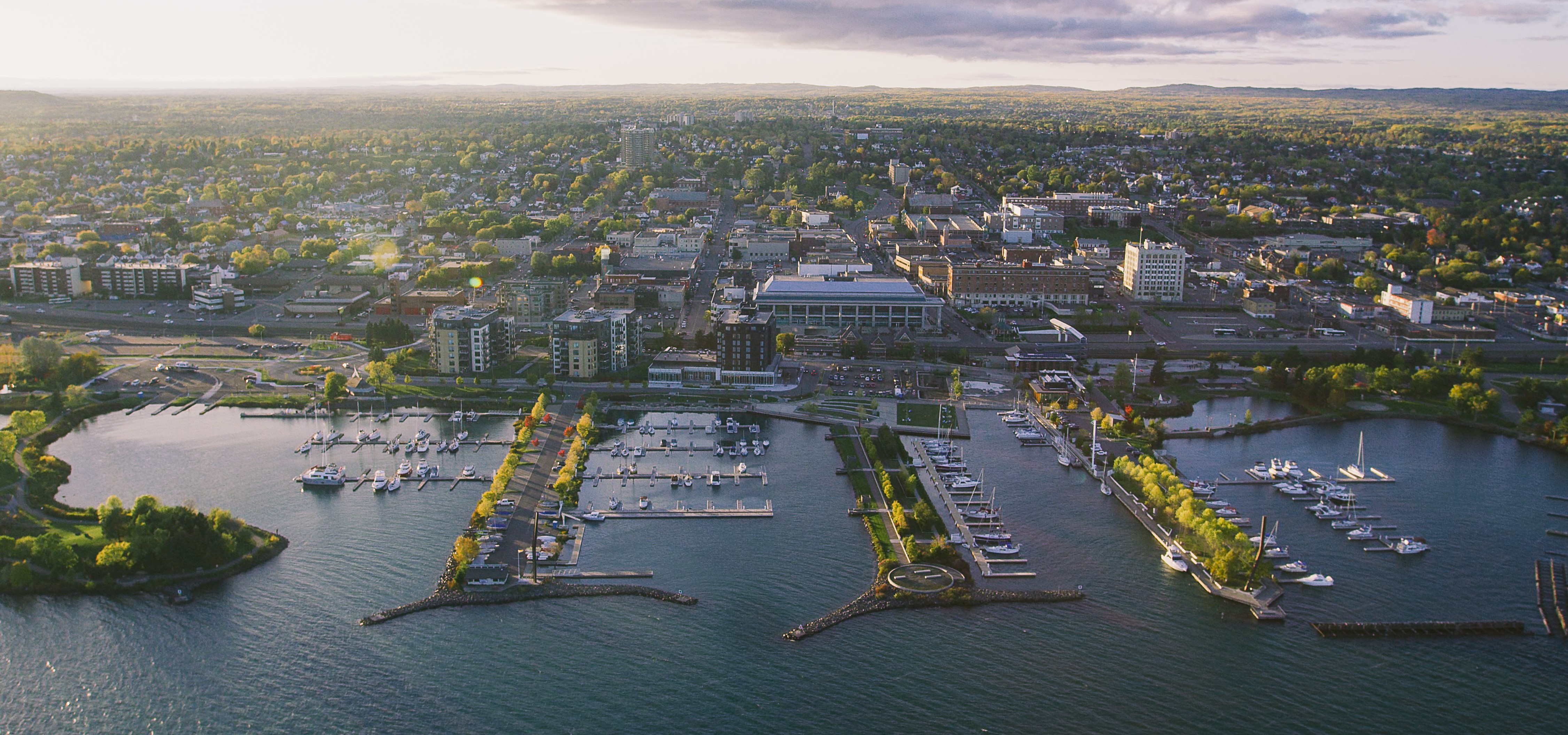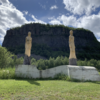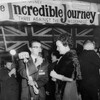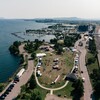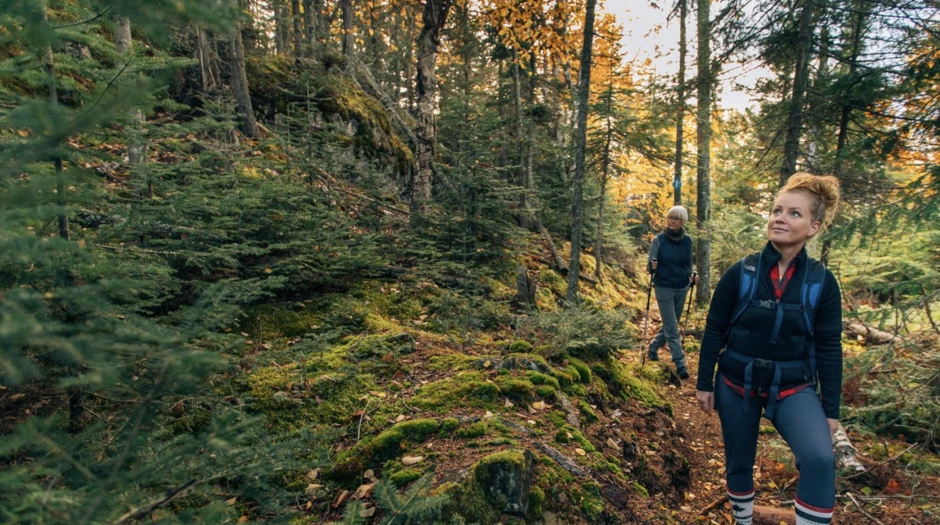
Finnish Culture in Thunder Bay

Sisu (see-soo, pronounced quickly) is a little Finnish word with a big meaning. You will see it all over Thunder Bay on bumper stickers, clothing, and even tattooed on youth. It means tenacity, strength, stamina, strong will, even stubbornness. For the descendents of the Finnish immigrants, the pop cultural branding of the word is a way to pay homage and to recognize the challenges of the Finnish ancestors who settled here. Sisu is more than a word. It’s a conviction, a way of life.
In a way, sisu is a romantic idea for me. I’ve never experienced the hardships like my forefathers had. I asked my 87-year-old dad what sisu meant to him. “Guts,” he said. “For the average working guy like me, it means guts.”
Here’s a bit of his story. In 1950, my dad worked on the tug boats in summer and was a fur trapper in the winter. To get to his trap line, he took the train from Port Arthur to Reba, a whistle stop along the Grand Trunk line. From the train, he walked six miles through the snow to his closest cabin, while carrying three weeks of food and supplies on his back. His farthest cabin was 22 miles from the tracks. The trap line was 100 square miles, and he traveled 10 miles per day and chopped through the ice with an axe to set traps and to collect the beavers. “You had to be careful. If you broke your leg or something, you had 22 miles to get back to the tracks.”
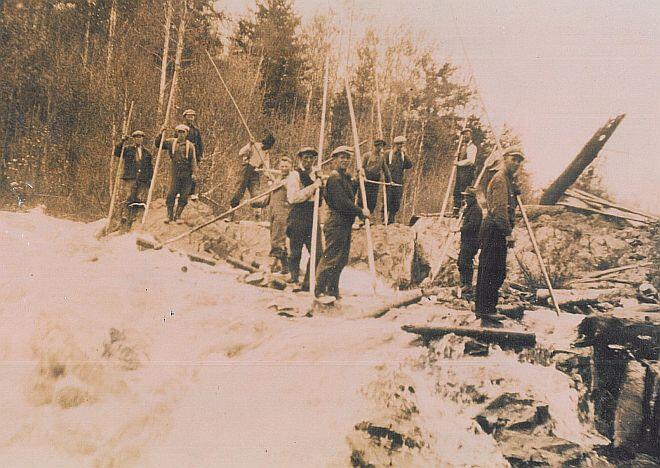
He then told me about his father. The railways and bush contractors were two of the main employers for immigrants in the 1930s. Bush workers cut logs with a swede saw for lumber and railway ties, and the logs for ties had to be hand hewn on two sides to have flat edges for the rails. The logs were then transported by floating them down the rivers. My grandfather had the job of grabbing the waterlogged ties from the river with a pickaroon and pulling them onto a jack ladder, a conveyor belt with spikes. He then had to carry the ties on his shoulder to a rail car. Each log was eight feet long and weighed up to 300 lbs. He had to wear a horse’s sweat pad to carry the log so as not to break his shoulder. He was paid pennies for each log he carried.

Thunder Bay is an oasis in the wilderness, where a thirty minute drive in any direction puts you in God’s country. The landscape is so rugged and wild that when settlers first arrived, it was tough going to make a home. The first Finns settled in the area in the 1870s, and many Finnish communities popped up in the surrounding areas, such as Alppila, Tarmola, Intola, and Suomi. There were a few significant Finnish communities in Canada: Vancouver, Toronto, Sudbury, and the twin cities of Fort William and Port Arthur (the two Cities amalgamated in 1970 to become the City of Thunder Bay). East Simpson Street was the hub of the Finnish Community in Fort William; and in Port Arthur, Bay Street. The City’s population swelled when the bush workers came home from the camps in the spring with money to spend.

Over the years, the Finnish settlements in the rural areas had faded to road names, and many of the businesses have since gone. However, the Finnish culture is still strong. The junction of Bay and Algoma Streets is a hub of businesses and activities, the Finnish Labour Temple still hosts cultural meetings and events, many restaurants throughout the City specialize in Finnish cuisine, and the Thunder Bay Finnish Canadian Historical Society and Lakehead University have worked together to record and preserve the history. Thunder Bay has become the go-to place for academics, students, researchers, filmmakers, and writers from all over the world to study, record, and to experience our living Finnish history and culture, such as the sauna.
The sauna has become so rooted in Thunder Bay culture that I dare to say almost every camp has one. Even many new houses built, whether for a Finn or not, have a sauna plan. Someone once told me that his elderly mother, who was born and raised in Italy, never dreamed that she would one day be running down the dock of her camp, naked, to dive into the water after a sauna.
Thunder Bay has taken sisu to heart with a drive and a passion to keep our unique heritage alive.
Editor's Note: This story originally appeared in the 2014 Thunder Bay Experience Guide.
Recommended Articles
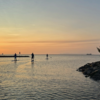
Epic Lake Superior Adventures Near Thunder Bay
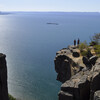
Experience Your Perfect Summer in Thunder Bay

Eco-Friendly Travel in Thunder Bay
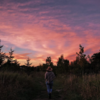
Wellness Retreats in Thunder Bay

LGBTQIA+ Friendly Businesses in Thunder Bay

Uncovering Thunder Bay's Hidden Gems
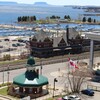
Top 10 Interesting Facts About Thunder Bay

Work Hard, Reward Yourself: Discover Thunder Bay’s Best Winter Experiences

Thunder Bay Winter Fun Guide 2025
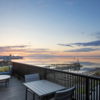
12 Best Places to Stay in Thunder Bay

5 Fantastic Ways to Explore the Water in Thunder Bay

5 Reasons to Bring a Conference or Meeting to Thunder Bay, Ontario
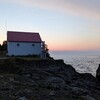
21 Ways to Enjoy Thunder Bay
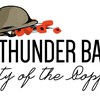
The Remembrance Poppy and its Thunder Bay Roots

Why You Should Always Travel With Fishing Gear in Thunder Bay

This new cruise ship sails into Thunder Bay

Chill Out in Thunder Bay: Why Cold Plunges Are Hot Right Now

Walk This Way: Self-Guided Art and History Tours in Thunder Bay

